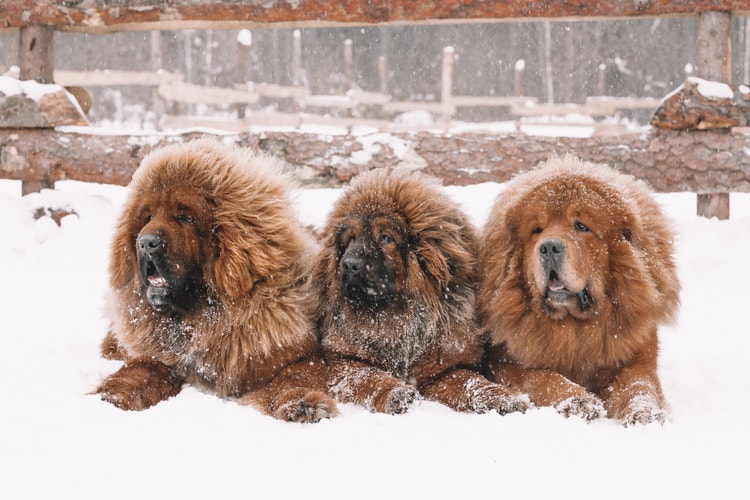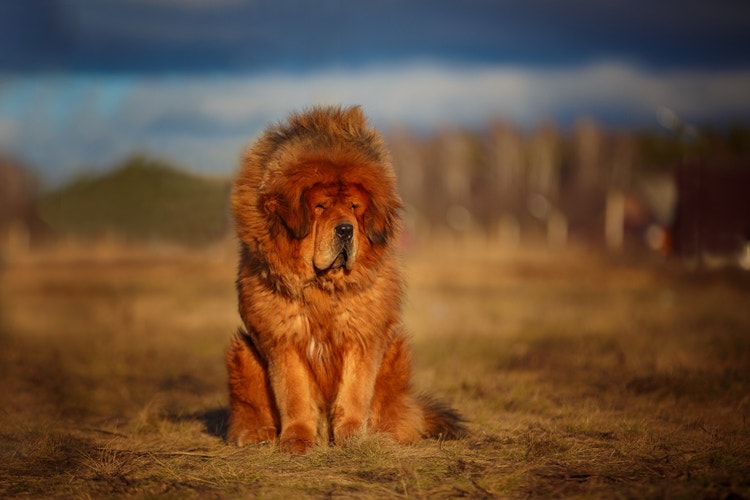
Tibetan Mastiff


Where Are Tibetan Mastiffs From?
The history of the Tibetan Mastiff is well hidden, thanks to the isolation of Tibet from the rest of the world. They have been guarding land and flock for centuries, and are believed to be the ancestor of every other Mastiff breed. Their large bodies and thick fur are perfect for the cold climate and high altitude of the Himalayan Mountains, and their intimidating demeanor acts as a very effective deterrent for potential intruders.
In the mid-19th century, travelers were allowed to enter Tibet, and many wrote about their first-hand experiences. Marco Polo noted the Mastiff to be as “large as donkeys.”
Exportation of the breed to England began around the same time, and America became home to Tibetan Mastiffs roughly 100 years later. Today, the number of Mastiffs in Tibet has dramatically decreased, though they are likely still bred by the people of the Chang Tang plateau.
Caring for a Tibetan Mastiff
What Kind of Diet Does a Tibetan Mastiff Need?
What Kind of Diet Does a Tibetan Mastiff Need?
Mastiffs do well on a high-quality, large-breed commercial diet. They need less food then their size suggests, and will occasionally skip meals or only eat when hungry. If you have any nutrition questions, discuss them with your veterinarian.
Do Tibetan Mastiffs Need to Be Brushed?
Do Tibetan Mastiffs Need to Be Brushed?
Despite their long fur, Tibetan Mastiffs rarely require brushing. You’ll need to use a deshedding tool once a year when they shed their winter undercoat.
Are Tibetan Mastiffs Healthy?
Are Tibetan Mastiffs Healthy?
Tibetan Mastiffs are relatively healthy, with an average lifespan of 10 – 12 years. They should be screened for hip and elbow dysplasia, hypothyroidism, and eye disorders.
Mastiffs are predisposed to: gastric dilatation volvulus, hip dysplasia, elbow dysplasia, cataracts, entropion, pyoderma, epilepsy, hypothyroidism, allergies, and ear infections.
Can You Train a Tibetan Mastiff?
Can You Train a Tibetan Mastiff?
The Tibetan Mastiff requires an experienced owner who is willing to dedicate time to training. They are very independent, will only listen to you if trusted, and should not be allowed off leash. Mastiffs are not food motivated, so using treats is not an ideal training method.
How Much Exercise Does a Tibetan Mastiff Need?
How Much Exercise Does a Tibetan Mastiff Need?
Tibetan Mastiffs need daily exercise, but they do not enjoy organized play. Work-related exercises, such as monitoring and patrolling, are much preferred. They are less active in warmer weather. Like other large-breed guard dogs, they tend to conserve energy until it is needed.
What Are the Physical Characteristics of a Tibetan Mastiff?
Tibetan Mastiff Facts
Other Breeds to Explore
References
- American Kennel Club. The Complete Dog Book. Random House Digital, Inc., 2006.
- Morris, Desmond. Dogs: The Ultimate Dictionary of Over 1,000 Dog Breeds. Trafalgar Square, 2002.
- Wilcox, Bonnie and Chris Walkowicz. The Atlas of Dog Breeds of the World. T.F.H Publications, Inc., 1995.


